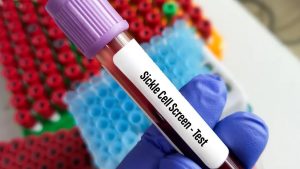While dogs are completely harmless for the human race, their food might not be. A new study suggests that multidrug-resistant bacteria found inside dog food is capable enough to plunge the world into another health crisis. A new research paper presented at the European Congress of Clinical Microbiology & Infectious Diseases (ECCMID), noted that feeding raw food to dogs may give rise to a bacteria that is resistant to anti-bacterias.
The researchers examined several dog food samples from supermarkets and pet shops and the findings revealed the presence of Enterococci, a genus of bacteria commonly found in human intestines, in more than half the analysed samples.
Also Read: Another possible wave of COVID-19 could hit US, warn officials
The analysis was carried out by researchers from UCIBIO, Faculty of Pharmacy at the University of Porto in Portugal.
Why is the presence of Enterococci in dog food, a concern?
Enterococci are gram-positive cocci commonly found in the intestines of humans. The prime cause of concern behind the presence of Enterococci is that these types of bacterias are mostly intrinsically resistant to antibiotics.
This means the infection caused by this bacteria will not be treatable by commonly available anti-bacteria drugs. Now, scientists fear that some species of these Enterococci can lead to a dangerous outbreak which is going to be nearly impossible to curb due to the presence of a drug.
Several VRE (Vancomycin-Resistant Enterococci) related infections have been reported in the US over the last two decades.
How dangerous are these bacteria?
According to the World Health Organisation antibiotic resistance of some bacterias has been classified as one of the greatest threats to public health worldwide.
An estimated 700,000 people around the world die every year from drug-resistant infections, said the United Nations data adding that these numbers could rise to 10 million by 2050 if sufficient actions are not taken.
“This study shows that dog food from international brands is a vehicle of clinically-relevant enterococci carrying resistance to last-resort antibiotics and relevant virulence genes, thus positioning pet food as an important source of antibiotic resistance spread,” says the paper, co-authored by Dr Ana Freitas, Dr Carla Novais, Dr Luísa Peixe and colleagues from UCIBIO.
What is raw dog food?
Raw dog food is homemade, store-bought, freeze-dried, or dehydrated meal. A raw diet usually includes organ meats, muscle meat, whole or ground bone, raw eggs, dog-safe fresh fruits and vegetables, and dairy products such as yogurt.
Also Read: Travel plans giving you butterflies in the stomach? They might be superbugs
The trend of feeding raw food to dogs has grown manifold in the last couple of years owing to the assumption that these meals are healthier for dogs.
The UCIBIO study found that in all the raw-frozen samples analysed, multidrug-resistant Enterococci was present – including bacteria resistant to linezolid. While only three of the non-raw samples contained multidrug-resistant species of Enterococci.







